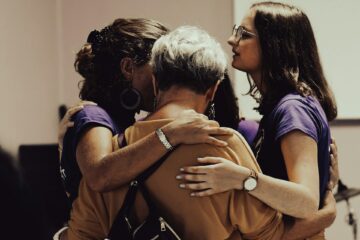The effects of domestic violence do not disappear when the violence subsides. Survivors often bear emotional, psychological, or even physical scars that can impact the rest of their lives despite escaping toxic surroundings. For those who are struggling with the impacts of domestic violence, Domestic Violence Treatment in California helps find safety, healing, and recovery.
Supporting both victims and survivors alike means having a bottom-up understanding of the treatment direction, line of resources, and first steps of the process. Access to a diverse and enriched mental health approach creates a progressive landscape, and California provides access to services that are trauma-informed and all-encompassing.
Understanding Domestic Violence Beyond the Physical
When mentioning the phrase “domestic violence,” people associate it almost all the time with the physical element. The reality is way more nuanced than that. Abuse can take many forms, such as verbal, emotional, psychological, sexual, or even financial. Survivors can, and often do, suffer from manipulation, isolation, threat, control, and gaslighting in everyday choices, and more.
Domestic violence can happen in:
- Intimate relationships
- Martial unions
- Families including abuse of a child and an elder
- Situations of cohabitation or within a shared residence
This array of abuses, as diverse as the forms in which it takes, equally demands equally diverse treatment options that take into consideration the aftermath of the violence. Emotional healing and the process of relearning trust with oneself and people around cannot happen overnight. Professional help is usually needed to address and tackle these issues.
Why is Treatment for Domestic Violence Victims Important?
Abandoning an abusive situation is only the first hurdle. For many, it is the psychological trauma, PTSD, depression, anxiety, and an arsenal of other mental problems that emerge as the real conflict. Left untreated, these injuries may result in trauma, mental seclusion, substance abuse, and abusive relationships.
Seeking professional assistance for trauma arising from domestic violence can:
- Reconstruct one’s self-esteem and self-confidence to healthy levels
- Foster an emotional healing space to work through trauma
- Assist in self-regulation
- Attend to the effects of addiction and depression
- Offer referrals to legal aid and other supportive agencies
- Assist in the cultivation of long-term recovery
- Champion resilience
Restoration of autonomy, power, and personal self-worth is achieved through whatever means necessary, with hope being the only limiting factor. Treatment is beyond simple the alleviation of distress.
An Overview of Domestic Violence Treatment in California
In California, there are many clinics that work to protect the population and assist those who are trying to reintegrate through various levels of support. California is home to numerous clinics that aid victims on many domestic violence and offer mental health care and case management through a cross-disciplinary approach.
Typical aspects:
Individual Therapy
Private sessions with a licensed therapist assist the survivor in trauma recovery, coping, and emotional pain work in a secure, confidential setting through the aid of unique strategies. Therapeutic modalities can encompass a variety of areas, such as:
- Trauma-focused cognitive behavioral therapy (TF-CBT)
- EMDR (Eye Movement Desensitization and Reprocessing)
- Somatic Therapy
- Narrative Therapy
- Dialectical behavior therapy (DBT)
The approaches listed above are evidence-based and assist survivors in reframing, managing negative memories, and fostering emotional safety.
Group Counseling and Peer Support
Being in a community that shares your experience can be healing in and of itself. Group counseling offers a platform to voice experiences, gain knowledge, and advance as a collective. Feelings of shame, guilt, and isolation that are so prevalent after abuse are mitigated.
Support groups that peer mentors facilitate are quite beneficial when aimed toward community building and fostering responsibility among group members.
Emergency and Transitional Housing Services
Survivors who are in the most dangerous situations are the ones served by domestic violence programs in California. The programs include emergency shelters, housing vouchers, and transitional housing programs. Survivors are able to prioritize their recovery without the fear of encountering harm that is often overwhelming.
Legal Advocacy and Case Management
Survivors of abuse often face the challenge of gaining access to restraining orders or custody. Legal assistance is a common necessity among domestic abuse survivors. Several treatment programs include individuals who have been trained to assist clients through complex procedures. Case managers and community service coordinators are commonly paired.
Who Might Benefit from Domestic Violence Treatment?
People of all backgrounds and ages are encouraged to seek healing and support. Treatment is available to people of all backgrounds and genders, and all sexual orientations. As a result, support is available to every individual, regardless of their past.
You may be a good candidate for the treatment if you:
- Encounter difficult emotional situations related to abuse.
- Spend time wondering if people can be trusted, and have trouble forming healthy bonds.
- Have memories, experience panic attacks, or have bad dreams.
- Can’t seem to escape damaging relationships.
- Have a substance abuse problem, or have developed other dangerous behaviors to cope.
- Do not know what steps to take to help you move forward if you leave your partner.
No one should be embarrassed about seeking help, and healing is always an option, regardless of the timing of the trauma.
Signs You or Someone You Know Might Need Help
Although “treatment” might sound intimidating, a trauma survivor often has difficulty differentiating signs and symptoms from trivialities, especially if the trauma has been insidiously normalized. For a more comprehensive definition, it might be useful to think of//their daily functioning as a spectrum ranging from well to ill. Signs of ill functioning (often referred to as “positive symptoms” or “symptoms of disarray”) can include, but are not limited to:
- Ongoing fear or hypervigilance even in ostensibly safe situations.
- Free-floating rage, unmodified mood, or its complete opposite.
- Sleep and appetite disruptions.
- Social avoidant behavior including various people, settings, or conversations.
- Self-neglect in the form of personal care or remains,
- Centered or more often, hyperactive taut.
- Taut and constricted level of functioning.
- Self-targeted loathing or nihilistic attitudes.
- Self-medication, especially with alcohol and illicit substances.
Encouragement to engage even with minimal contact is often transformative, particularly in the absence of shaming. Slow down and turn the inner or outer conversation into an offer of help.
Barriers to Seeking Help and How to Overcome Them
Fulfilling the need through available services might be the most approached paradox of the people step or the survivors’ cycle of overcoming abuse and violence in the absence of the needed help. Barriers to treatment can include:
Fear of Retaliation
Some people worry that abuse will escalate further if help is sought, or even put the children in danger. Programs in California take confidentiality very seriously and often will help with safety planning to limit the level of risk.
Financial Dependence
Financial abuse prohibits a person from working or leaving an abuser, which often means access to money, housing, or Health Insurance is unavailable. Many treatment centers accept public health coverage or offer sliding scale fees. There is also transitional housing available with employment assistance.
Stigma and Shame
Obtaining necessary treatment is difficult if survivors feel ashamed of ‘allowing’ the abuse or think that others won’t relate to their situation. Be it self-blame or self-doubt, it is rooted in manipulation and isolation as a result of the trauma and is not a reality. Trauma therapists strive to take apart the shame and self-distrust.
Overstretched Service Gaps
California is home to a multicultural population. As such, service provision and access to resources should take cultural nuances and language barriers into consideration. A number of practices have bilingual therapists and customized culturally sensitive therapeutic approaches.
Many of the above barriers can be overcome by taking a single step, which is reaching out to a provider who comprehends the intricacies of domestic violence and is willing to provide customized support.
Alliene and Community Healing
Healing is still possible through bonds formed outside the context of the therapy. While individual treatment remains core to the process, it works hand in hand with community-based services, spiritual support, and family therapy, which promote the restoration of post-treatment healthy bonds.
California is rich in such community-centered initiatives, which help heal by:
- Spreading awareness of domestic violence
- Aiding survivors through training and support programs
- Equipping allies and advocates with the skills to provide safe support
- Partnering with educational institutions, faith-based organizations, and community service providers
Survivors are provided with community support that lessens the feeling of invisibility and abandonment that is a result of abuse. This helps foster feelings of community and support that survivors need to feel valued and appreciated.
How Treatment Empowers Survivors
The goal of recovering from domestic violence should not be “fixing” someone. Rather, it should focus more on healing and reclaiming one’s strength and self. Survivors are not broken, but incredibly strong individuals who have experienced pain and are on a journey to healing.
Professional treatment offers:
- A life blueprint that can be redesigned according to one’s wishes.
- A chance to handle one’s suffering in a controlled environment.
- Techniques to control one’s emotions and set healthy boundaries.
- Ability to express oneself freely.
- Chance to work towards one’s aspirations.
The outcome being sought after might not be achieved on the first try. There might be bumps in the process. However, with the right help, the right amount of discipline, and the correct amount of time given, progress will always be there to grasp.
Taking the First Step Toward Recovery
The right time to ask for help is when someone close to you is going through the aftermath of a certain kind of abuse. You don’t have to be a master planner or have the perfect blueprint of a process to follow. All that you should have is the understanding that healing, peace, and support are something that you can have.
The first thing that you can do is reach out to someone who is offering help for domestic violence treatment in California. Most of the programs start with an assessment called an intake to gain a better understanding of a person’s needs and create a treatment plan according to their preferences, goals, and the time that they have. Seeing the king help from others can never be considered a weakness.
Final Thoughts
Fear also should not be a way of life for anybody, and no one should carry the burden of abuse for the steep price of their freedom. Recovery can be arduous in the beginning, but with the right motivation and support, it can transform into a positive breakthrough in one’s life. Survivors should be made to feel guaranteed that they will be protected, respected, and motivated throughout the journey.
At CA Mental Health, the main aim is to help people recover their lives and restore the pride that they deserve, particularly focusing on the trauma that they have been put through. Your privacy and trauma are respected with the utmost importance. Your goals and well-being come next in line, for every single one of us has the right to live without fear.












